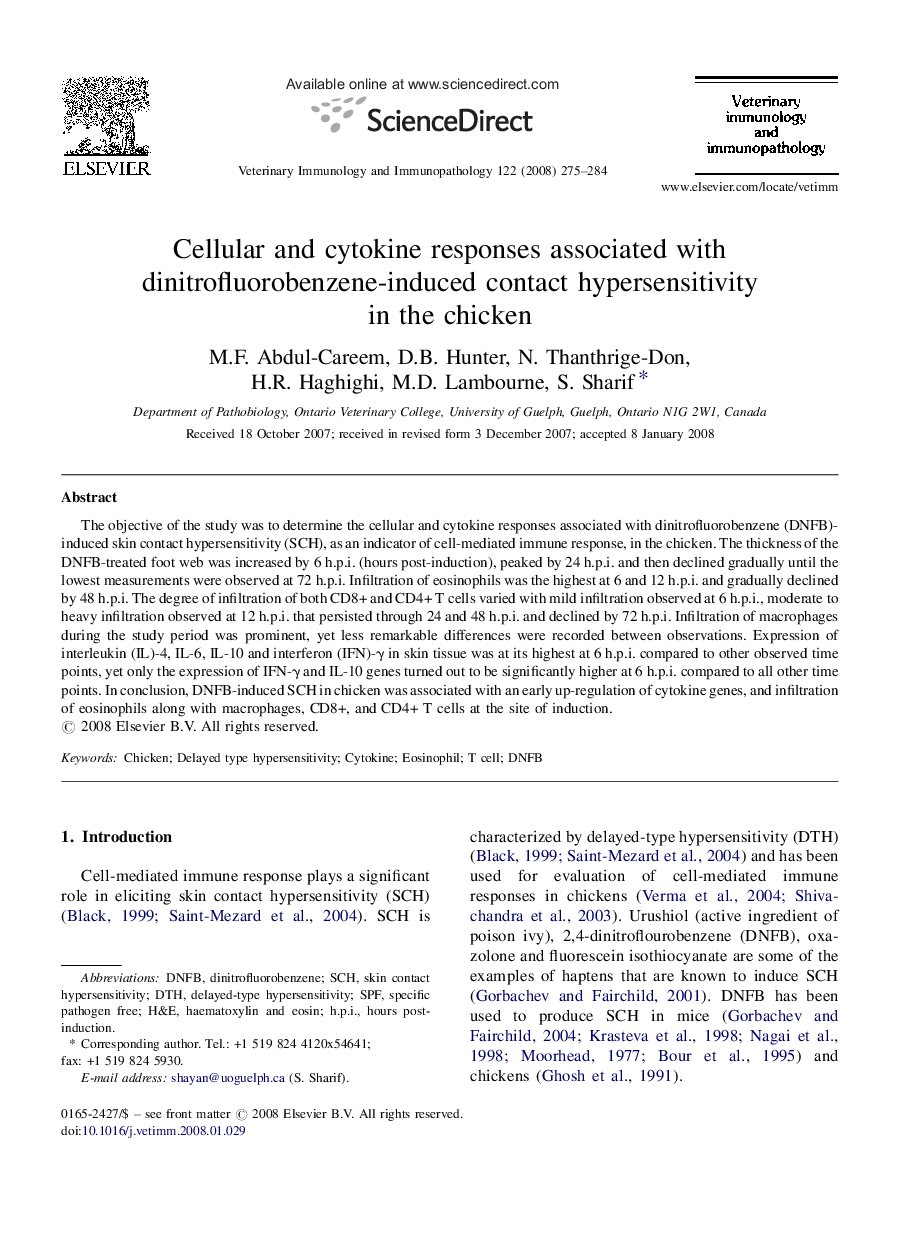| Article ID | Journal | Published Year | Pages | File Type |
|---|---|---|---|---|
| 2463012 | Veterinary Immunology and Immunopathology | 2008 | 10 Pages |
The objective of the study was to determine the cellular and cytokine responses associated with dinitrofluorobenzene (DNFB)-induced skin contact hypersensitivity (SCH), as an indicator of cell-mediated immune response, in the chicken. The thickness of the DNFB-treated foot web was increased by 6 h.p.i. (hours post-induction), peaked by 24 h.p.i. and then declined gradually until the lowest measurements were observed at 72 h.p.i. Infiltration of eosinophils was the highest at 6 and 12 h.p.i. and gradually declined by 48 h.p.i. The degree of infiltration of both CD8+ and CD4+ T cells varied with mild infiltration observed at 6 h.p.i., moderate to heavy infiltration observed at 12 h.p.i. that persisted through 24 and 48 h.p.i. and declined by 72 h.p.i. Infiltration of macrophages during the study period was prominent, yet less remarkable differences were recorded between observations. Expression of interleukin (IL)-4, IL-6, IL-10 and interferon (IFN)-γ in skin tissue was at its highest at 6 h.p.i. compared to other observed time points, yet only the expression of IFN-γ and IL-10 genes turned out to be significantly higher at 6 h.p.i. compared to all other time points. In conclusion, DNFB-induced SCH in chicken was associated with an early up-regulation of cytokine genes, and infiltration of eosinophils along with macrophages, CD8+, and CD4+ T cells at the site of induction.
